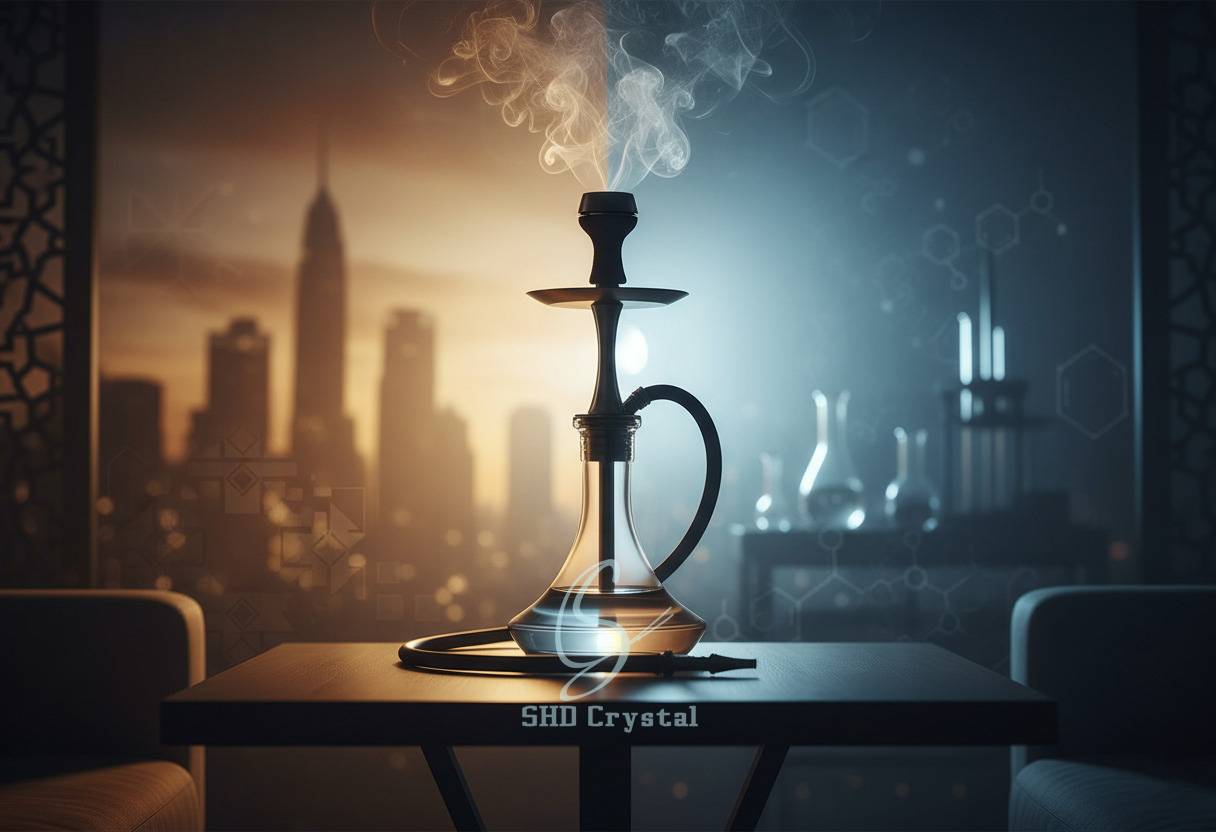> Blogs > Is There Nicotine in Shisha? Understanding What You‘re Really Inhaling
Is There Nicotine in Shisha? Understanding What You're Really Inhaling
Core keywords: is there nicotine in shisha, shisha ingredients, health effects of hookah smoking

1. What Exactly Is Shisha?
Before answering “is there nicotine in shisha,” it’s essential to understand what shisha actually is. Shisha—also known as hookah tobacco or mu‘assel (a molasses-based tobacco mixture)—is a flavored blend commonly used in water pipes. The main shisha ingredients typically include tobacco, molasses or honey, glycerin, and natural or artificial flavorings such as mint, fruit, or coffee.
While many assume that the water in the hookah filters out harmful substances, it merely cools the smoke but does not remove toxins. This misunderstanding has contributed to shisha’s reputation as a “safer alternative” to cigarettes, even though both contain nicotine and similar harmful chemicals.
2. Is There Nicotine in Shisha? The Direct Answer
So, is there nicotine in shisha?
Yes—most traditional shisha tobacco contains nicotine because it is derived from real tobacco leaves. Depending on the brand and blend, the nicotine content can vary from 0.05% to 0.5% by volume, and in some cases, even higher.
The misconception that shisha is “nicotine-free” often comes from flavored or herbal versions marketed as tobacco-free. However, even these alternatives may not be completely safe. Some “herbal shisha” products release trace levels of nicotine through contamination or the use of reconstituted tobacco.
Even when nicotine is absent, other harmful chemicals such as carbon monoxide, tar, and volatile organic compounds are still produced by charcoal combustion. Eliminating nicotine does not eliminate risk—users may still face exposure to toxic substances.
This means that even casual hookah users can develop nicotine dependence over time.
3. Understanding Shisha Ingredients and Their Function
Each ingredient in shisha serves a specific purpose beyond flavor:
- Tobacco – The core source of nicotine and the addictive element.
- Molasses or Honey – Binds ingredients and provides moisture, helping to produce thick smoke.
- Glycerin – Enhances vapor production, creating the smooth texture users enjoy.
- Flavoring Agents – Add distinct aromas like apple or mint but can release chemical byproducts when heated.
By analyzing these shisha ingredients, it becomes clear that the mixture is crafted for sensory pleasure rather than health safety. Even herbal or low-nicotine blends can generate harmful compounds when air and charcoal interact during heating.
4. The Health Effects of Hookah Smoking
The health effects of hookah smoking are often underestimated due to the misconception that water filters out harmful substances. Because a typical hookah session lasts between 45 minutes and an hour, users can inhale the smoke equivalent of 100 or more cigarettes in a single sitting, depending on inhalation depth and session duration.
Nicotine absorbed from shisha causes similar physiological effects as cigarette use: elevated heart rate, constricted blood vessels, and long-term dependence. Beyond nicotine, charcoal combustion produces carbon monoxide and heavy metals that can affect the lungs, heart, and overall oxygen balance in the body.
Expert Insight:
“Hookah smoking is often seen as safer than cigarettes, but it carries health risks just like any tobacco product,“ says Jennifer Folkenroth, National Senior Director of Tobacco Programs at the American Lung Association. She explains that even with water filtration, hookah smoke still contains nicotine, tar, carbon monoxide, and heavy metals, all of which can contribute to addiction and long-term respiratory damage.
Secondhand exposure is also a concern in enclosed lounges, where air quality can deteriorate significantly during peak hours. The social and sensory appeal of hookah does not negate these underlying risks.
5. Are There Nicotine-Free Alternatives?
Some consumers are turning to nicotine-free shisha made from sugarcane, tea leaves, or herbal blends. While marketed as safer, these options still produce smoke containing carbon monoxide and fine particulate matter.
Manufacturers have also introduced vapor-based hookah systems using heat-not-burn technology to reduce combustion byproducts. Although promising, research on these systems remains limited, and they should be approached with the same caution applied to e-cigarettes.
6. The Takeaway: Awareness Over Assumption
So, is there nicotine in shisha? In most cases, yes—especially when it contains real tobacco. Even when nicotine is absent, smoking still exposes the body to harmful chemicals. The sensory richness and social appeal of hookah culture make it easy to overlook its health implications, but awareness is crucial.
By understanding shisha ingredients and recognizing the health effects of hookah smoking, consumers can make informed, responsible choices. For deeper insights into hookah craftsmanship and safety, follow trusted sources like SHD Crystal, where innovation meets awareness.
Learn More with SHD Crystal
At SHD Crystal, we believe knowledge and quality go hand in hand. Explore our collection of precision-crafted hookah components and discover how innovation can enhance safety and performance.
- : No. 68 Shasong Road, Shajing Street, Bao'an District, Shenzhen, Guangdong Province
- : +86-755-2335 8353
- : info@shdcrystal.com
Follow us